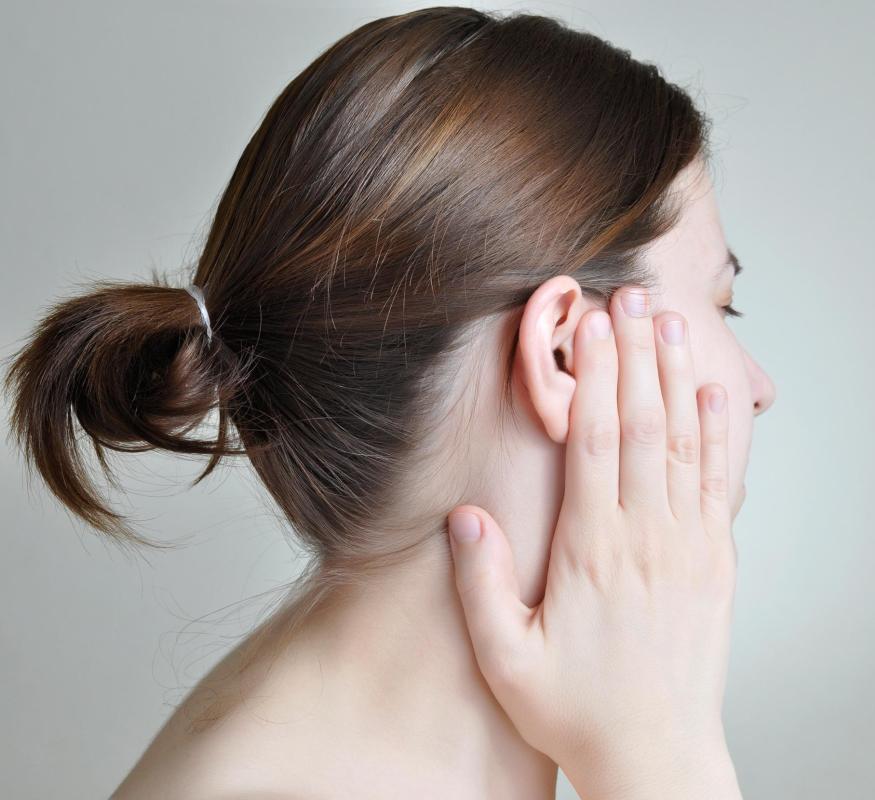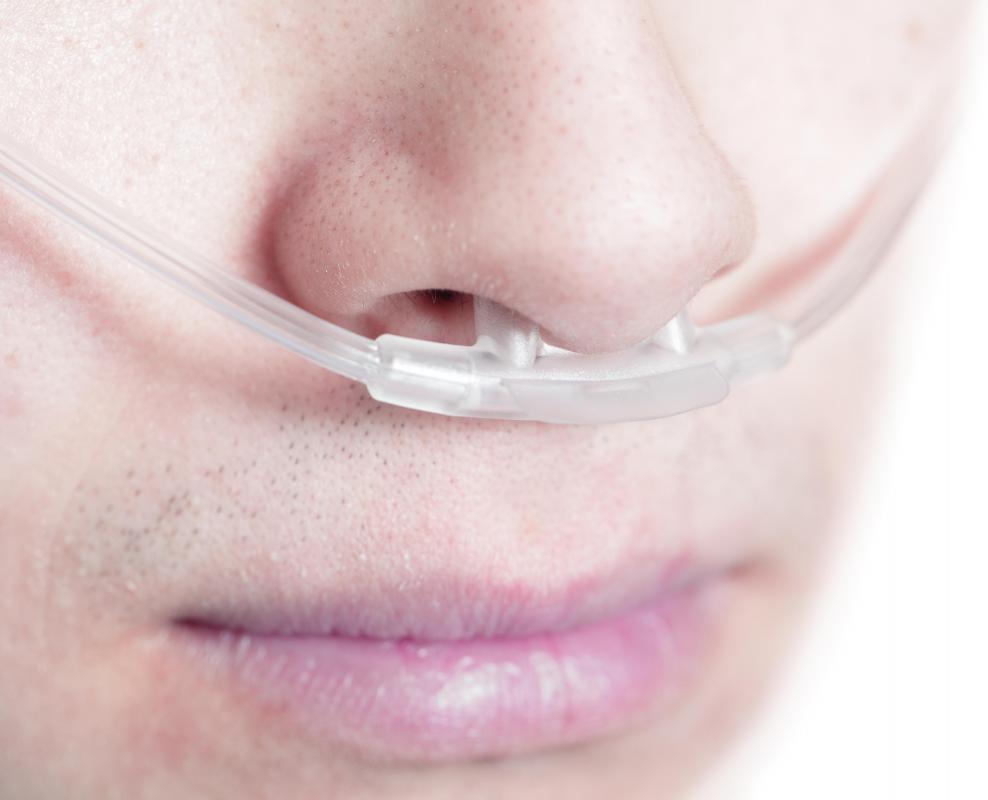At WiseGEEK, we're committed to delivering accurate, trustworthy information. Our expert-authored content is rigorously fact-checked and sourced from credible authorities. Discover how we uphold the highest standards in providing you with reliable knowledge.
What Are the Side Effects of Oxygen Therapy?
The side effects of oxygen therapy are few and rare, but can include ear pain, ear drum rupture, and trauma to the sinuses. Ear pain or discomfort is the most common side effect, which occurs as the body tries to adjust to the therapy. Rupture of the ear drum is significantly less common, but is most likely to happen in people who are deaf or hard of hearing. Barotrauma to the nasal sinuses is especially rare and happens for reasons similar to ear drum rupture. Overall, oxygen therapy is a safe treatment with minimum side effects if a person has no health conditions that might be worsened by it, though the therapy’s equipment can be dangerous.
Ear pain is among the most common side effects of oxygen therapy. The pain occurs as the body tries to equalize the pressure between the ears. In some cases, the inner ear is physically damaged due to the above-normal pressure. Some people experience mild discomfort rather than pain, but the discomfort should still be noted, as it can indicate a complication.

Deaf and hard of hearing people are more likely to experience certain kinds of ear problems as side effects of oxygen therapy. For example, some people experience the rupture of the ear drum. Ear drum ruptures can lead to further hearing loss and can take a month to heal. In some cases, if the ear drum fails to heal on its own, a doctor might place a patch over it as an out-patient procedure.

Sometimes, a person experiences barotrauma to his or her sinuses. Barotrauma is a physical wound that occurs in a person’s body because of a difference in air pressure. For example, some underwater divers are at risk of barotrauma when they dive too deep or surface too quickly. While barotrauma from certain activities like diving can sometimes be fatal, this is not so with oxygen therapy.

Some health conditions can be worsened by oxygen therapy. For example, heart attack patients and people who suffer from asthma may not respond positively to the treatment. Oxygen therapy is still being explored, however, and there might be many other conditions negatively affected by it.
Oxygen therapy carries a risk of fire because it requires a concentrated supply of oxygen. If compressed oxygen is exposed to sparks, it can explode and set fire to its surroundings. This risk can be avoided if triggering elements are kept away from the concentrated oxygen. Oxygen does not explode on its own, and its volatility can be managed with care.
AS FEATURED ON:
AS FEATURED ON:
















Discuss this Article
Post your comments